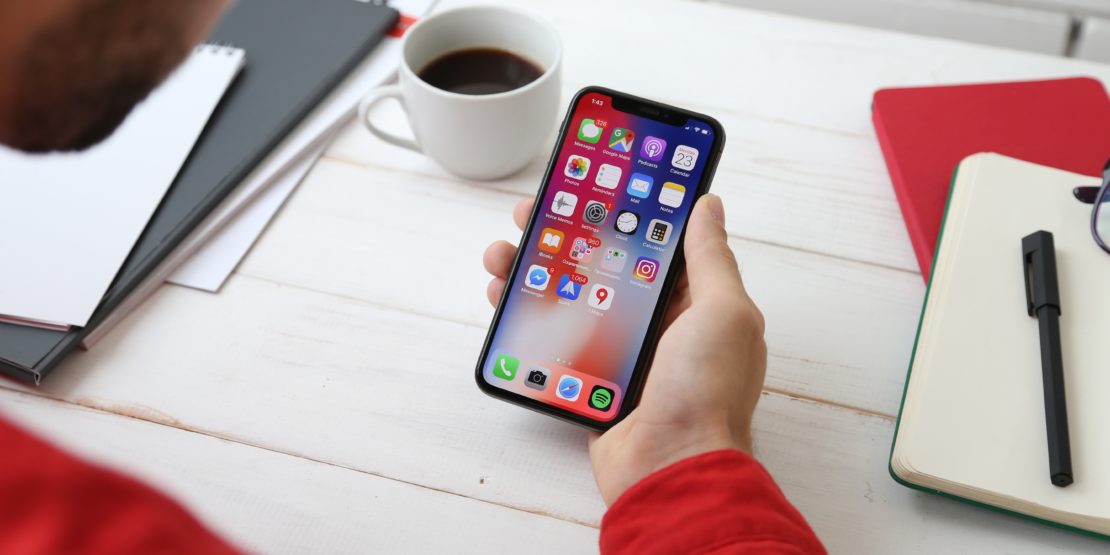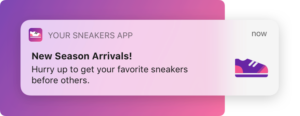App icon badges are a commonly used feature on many mobile devices. The badges appear as small dots over the logo of an app on a user’s home screen and can be designed in a wide range of eye-catching colors.
Fully supported by Apple and Android devices, app icon badges are easily accessible to a wide range of users. And they can make a real difference to the engagement levels of your app because they serve as a constant reminder to users to keep checking their notifications and interacting with the content on offer.
What is an App Icon Badge?
If you’ve got a smartphone, then chances are you see app icon badges very regularly. These little dots pop up over the corner of an app’s logo, giving a quick indication that the app in question has a new notification to share.
When a user holds the app icon badge down, they’ll see a list of notifications quickly appear. The notifications themselves look fairly similar to those that are displayed on the home screen. Users can choose to click the notifications and immediately launch the app or dismiss them if they are not of interest.
What Are Some App Icon Badge Use Cases?
There are many ways of using app icon badges to boost engagement. These notifications act as nudges for users to check or interact with an in-app event. One of the most popular uses of the badges is to promote push notifications, helping to ensure that the maximum number of users see a notification and act upon it. When a push notification is sent to users’ devices, it can also trigger an app icon badge to appear over the app on a user’s home screen – encouraging an impulse interaction.
Badges do not always have to be used in conjunction with push notifications. For example, apps may use badges to indicate the arrival of an email or an in-app message. On social media platforms like LinkedIn or Instagram, app icon badges are used alongside push notifications to denote major events like a connection request. The best practice, however, is to ensure it is clearly tied with something inside the app. This way, users are less likely to disable this feature.
Disabling Badges
In some cases, you may prefer not to use app icon badges for certain notifications – for instance, for regular updates or to signify an alarm or alert that needs to be actioned right away. Thankfully badges can also be easily disabled, so they won’t appear in situations that don’t make any sense to a user. Leanplum gives you the option of customizing your push notifications to add or remove badges – find out more in our guide.
When would you need to disable notification badges?
Certain notifications do not lend themselves to the use of app icon badges, so you may want to disable the feature at these times.
The feature makes little sense for notifications relating to time-sensitive alerts, like those of clocks and other alarms, for example. App icon badges are also not widely used for calendar reminders, and they are best avoided for ongoing notifications as these could quickly frustrate users. For this reason, app icon badges are not recommended for notifications relating to media controls, navigation instructions, or the processing of images and other content.
If you’d like to learn more about app icon badges and discuss how they work, get in touch with our team. We’re here to talk you through the options of app icon badges and equip you with the knowledge you need to maximize your user engagement.
To learn more about what Leanplum can do for your team, check out these resources:
- Read the Just Eat Takeaway.com Case Study to see how Just Eat Takeaway.com achieved a 17% increase in total order volume
- Read our article Ten Tips to Supercharge User Engagement
- Watch our full session with Popsa, From Batch and Blast to Personalization at Scale to learn how mobile-first companies optimize engagement, experience and revenue
- We are the only engagement platform with a focus on Subscription Apps and On-Demand & Mobile Retail
- Check out the Product Tour to see Leanplum in action
- Set up a complimentary personalized demo of Leanplum
—
For app-first companies, Leanplum is the only solution that helps personalize and optimize all customer touchpoints, both inside and outside the app. Leanplum combines multi-channel Lifecycle Marketing with the ability to A/B test the Product Experience for complete, end-to-end personalization of the mobile journey. Break down organizational silos and eliminate point solutions to enable rapid growth.






